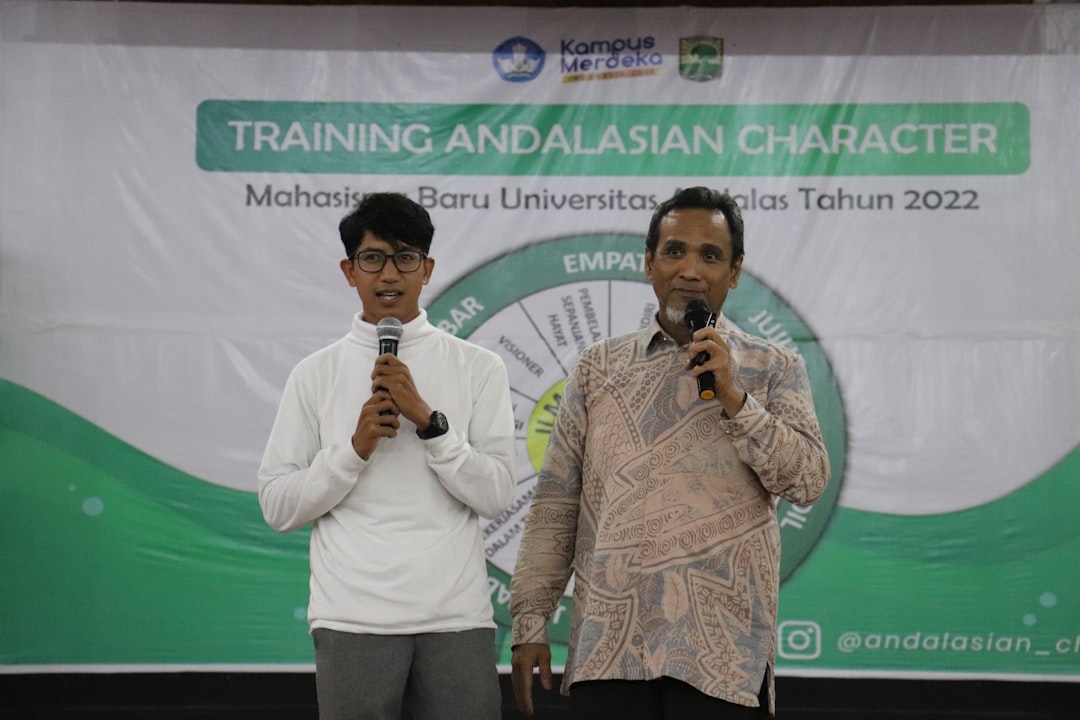

Engage prospects with a scan and streamline customer engagement with FREE QR code marketing tools by Sona – no strings attached!
Create a Free QR CodeFree consultation

No commitment

Engage prospects with a scan and streamline customer engagement with FREE QR code marketing tools by Sona – no strings attached!
Create a Free QR CodeFree consultation

No commitment
Health coaching services are undergoing a rapid evolution as client expectations shift toward personalized wellness and measurable results. While providers are increasing their use of digital tools, many still struggle to capture meaningful feedback, connect offline sessions with digital programs, and optimize the client experience across touchpoints. Paper forms and traditional surveys rarely keep pace with busy schedules, and they often fail to reveal which messages resonate, which programs drive adherence, or where clients are at risk of dropping off.
QR codes offer a fast, mobile-first bridge between real-world interactions and digital actions. With a single scan, clients can submit feedback, register for certified programs, request resources, or schedule follow-ups without logins or manual typing. This closes critical gaps that lead to lost opportunities such as anonymous engagement, incomplete profiles that hinder personalization, and delayed visibility into churn or upsell signals.
When embedded into core health coaching workflows, QR codes give teams real-time feedback loops, stronger engagement, and accurate audience segmentation that reflect actual behavior. Providers can better qualify interest for key services such as diabetes management, weight loss programs, or mental health support. The result is a consistent, data-driven foundation for improving outcomes, surfacing high-value prospects, and accelerating business growth.

QR codes turn every client interaction, whether in-person after a fitness session, during a wellness retreat, or at the end of a virtual consultation, into a fast track for feedback and continuous improvement. Clients only need a camera app to scan, which removes friction that often derails data capture. For health coaching providers, this means more complete insight into preferences, satisfaction, and outcomes with less administrative work and far less waiting.
One of the most persistent challenges in health coaching is losing valuable insight from clients who attend sessions but never complete follow-up forms. QR codes address this by meeting clients in the moment and making feedback submission effortless. The more straightforward the process, the higher the response rate, and the more confident you can be in tailoring programs, detecting risk, and prioritizing follow-up outreach.
By digitizing feedback collection, you increase response rates and bring previously invisible engagement to light. Over time, QR-driven feedback becomes a source of truth for optimizing programs, elevating client experience, and reducing the risk of missed business opportunities.
Shifting from analog processes to QR-enabled workflows eliminates delays and data loss. It also improves the quality and timeliness of the insights you rely on for coaching decisions.
Modern campaign tools make the switch manageable from end to end, from design to analytics. They ensure your feedback capture aligns with wider goals such as retention, program adherence, and client lifetime value, so you can connect operational improvements directly to growth.

Health coaching thrives on rapport, consistency, and personalization, yet it can be surprisingly hard to track engagement across every touchpoint. Many providers still rely on manual data entry or miss signals from clients who remain anonymous or skip long forms. QR codes create a reliable bridge that fits how people live and work today, supporting mobile-first participation and efficient follow-up.
They also unlock speed and flexibility. Busy clients will not download a new app to share a quick impression or ask a question. A smartly placed QR code gets them to a short survey, a resource, or a scheduler in seconds. For providers, this means better timing, better attribution, and an accurate view of what is working across programs and cohorts.
By tying offline and digital interactions together, QR codes resolve the problem of fragmented feedback data. Providers gain the timely, actionable insight needed to refine programs, personalize outreach, and improve outcomes throughout the client journey.

Not all feedback capture needs look the same, and generic portals rarely reflect the nuance of health coaching. Different QR formats help you match each touchpoint to the right digital action, from scheduling and assessment to reviews and resource access. Choosing the right format keeps journeys smooth while giving your team the data to understand behavior in context.
Dynamic QR codes are especially valuable in health coaching because content and programs change frequently. They allow you to update links without reprinting and to segment traffic by program, event, or feedback type, which improves your analytics and targeting accuracy over time.
With a platform such as Sona QR, you can generate and manage these formats in a single dashboard, update destinations as offers evolve, and unify analytics across campaigns.

Growth in health coaching often hinges on whether high-intent actions lead to a next step. Many providers fail to capture those signals because interactions at events, clinics, or group classes are not tied to digital follow-up. QR codes transform every surface into an onramp for engagement, turning fleeting interest into measurable data you can use for remarketing, retention, and referrals.
When planning placements, prioritize environments where motivation is strong and attention is focused. Place QR codes where clients are most likely to act, and keep the promise behind each scan clear and valuable. Think in terms of campaigns rather than isolated assets, and connect each scan to a specific workflow in your CRM.
Strategic placements improve scan volume and quality. They also reduce churn risk by making it easy for clients to signal interest, ask for help, or progress to the next step before enthusiasm fades.

Health coaching teams consistently face three challenges: losing high-interest prospects who avoid long forms, missing early churn signals, and struggling to motivate timely feedback. Integrating QR codes at each lifecycle stage solves for all three by collapsing the effort required to engage and by connecting those engagements to follow-up workflows.
Use cases are most effective when a QR code is paired with a clear benefit and a short, relevant action. Offer immediate value, such as a personalized resource or a quick scheduling link, to keep engagement high and encourage completion. Below are three proven use cases that directly support outcomes in health coaching.
By embedding QR-driven actions across touchpoints, you move beyond sporadic, hard-to-measure engagement. Every scan adds context, informs coaching, and compounds into sustained growth.
Most remarketing challenges in health coaching stem from anonymity. People read flyers, visit group classes, and browse program pages without ever identifying themselves. Each QR scan becomes a valuable signal that connects interest to identity, so you can segment by intent and follow up accordingly with intent-driven retargeting.
Think of scans as behavior-based tags, not just link clicks. When you distribute different codes across the funnel, you create a self-organizing audience map. This informs your outreach strategy, aligns messages to motivations, and ensures you respond to the client’s stage of change rather than guessing at it.
With Sona QR, every code becomes a smart entry point into your funnel, and Sona.com enriches those engagements with identity resolution and attribution. The result is a retargeting engine based on actual behavior, not assumptions.
QR codes are not only convenient links, they are connective tissue across your marketing channels. When configured correctly, they make offline touchpoints measurable, reduce friction at moments of decision, and contribute to a cohesive narrative from first exposure to lasting engagement.
For health coaching, the strongest results come from pairing QR codes with content that is genuinely useful in the moment. This might be a resource checklist at a seminar, a schedule link on a class poster, or an instant review form at the end of a program. Coordinating these across channels ensures clients always see a relevant next step.
A centralized analytics platform such as Sona QR helps unify scan data across these channels, monitor performance by campaign, and sync insights to your CRM. This creates a closed-loop system where every physical and digital asset works together to drive measurable outcomes.
Build your QR program like a growth initiative, not a one-off tactic. Begin with outcome clarity, move quickly to design and testing, and integrate analytics on day one. The checklist below maps to the realities of health coaching, where timing, personalization, and program evolution matter.
Each step includes recommendations for choosing destinations, aligning calls to action with client motivation, and ensuring your team can iterate without reprinting or reinventing processes. Consider creating a shared playbook so coaches and front-desk staff know exactly how and when to promote scans.
Clarify what you want to achieve and where friction exists today. Are you trying to increase post-session feedback rates, qualify leads from community events, or drive enrollment for a specific certified program?
Select the format that supports your goals and the level of flexibility you need. For most health coaching scenarios, dynamic codes are the best choice because content and offers change frequently.
Brand the code and provide a clear, benefit-driven call to action. Design for real-world environments where lighting, viewing distance, and movement vary widely.
Roll out iteratively, measuring early performance to inform wider deployment. Prioritize the places and moments most likely to capture motivated behavior.
Treat QR engagement like a performance channel. Monitor scans, follow-on actions, and cohort outcomes to refine your strategy.
For health coaching leaders, the biggest analytics gap is connecting feedback and engagement to revenue. It is useful to know a code was scanned, but without clarity on what happened next, you cannot prove impact or optimize spend. Robust tracking bridges that gap by linking scans to subsequent actions, pipeline creation, and retention outcomes using offline attribution.
A comprehensive setup should capture who scanned, what they scanned, and what they did afterward. When this data is unified with your CRM, you can attribute sign-ups to specific materials, identify which channels produce high-fit clients, and prioritize follow-up with those at risk of churn.
Done right, QR analytics give you a clear line of sight from scan to revenue. They turn episodic feedback into strategic intelligence you can use to improve client outcomes and business performance.
Many teams roll out QR codes with enthusiasm, then see momentum fade. Sustained success hinges on a clear internal process, disciplined testing, and consistent promotion by staff. The more your team champions the value of scanning, the more clients will participate, and the stronger your dataset becomes.
Focus your improvements on the client journey. Shorten forms, personalize next steps, and automate responses that deliver instant value, such as a resource guide or a booking confirmation. This makes scanning feel rewarding and builds a positive feedback loop.
Creative deployments keep engagement fresh. Consider QR codes on milestone badges or certificates, class check-in posters that double as micro-surveys, or water bottle stickers for cohort challenges. Start creating QR codes for free, then scale to advanced tracking and attribution with Sona.com as your program matures.
Health coaching providers succeed when they translate everyday interactions into measurable progress for clients and the business. QR codes make that possible by transforming every surface into a digital entry point and every moment of interest into an action. They simplify feedback, reveal intent, and feed the data infrastructure you need to personalize coaching and improve outcomes at scale.
With a thoughtful strategy, QR codes become more than convenience tools. They are a foundation for growth, enabling instant engagement, a connected client journey, and analytics that link scans to revenue. Platforms like Sona QR and Sona.com help you capture demand at the source, unify offline and online touchpoints, and prove impact across the funnel. Start small, iterate quickly, and let the data guide you to sustained, client-centric excellence.
QR codes have transformed health coaching services from passive feedback collection into an interactive, data-driven growth tool. Whether it’s gathering real-time client insights, enhancing personalized coaching experiences, or streamlining follow-up communications, QR codes replace tedious surveys with instant, mobile-friendly actions that capture valuable feedback effortlessly. Imagine knowing exactly which coaching methods resonate most with clients—and being able to refine your approach instantly based on that data.
With Sona QR, you can create dynamic, trackable QR codes in seconds, update feedback campaigns without reprinting materials, and link every scan directly to client engagement metrics. No more guessing—just smarter, more effective coaching strategies that drive client satisfaction and retention. Start for free with Sona QR today and transform every scan into actionable insights that elevate your health coaching services.
QR codes can be used to collect client feedback, register for programs, request resources, schedule follow-ups, and connect offline sessions with digital actions quickly and without friction.
QR codes increase feedback response rates, close gaps between offline and online engagement, enable real-time insights, improve personalization, support targeted marketing, and help track client behavior accurately.
Set clear objectives, choose the right QR code type such as dynamic codes, design the code with branding and a clear call to action, deploy it in high-impact channels, and track performance to optimize results.
Essential steps include defining your coaching goals and target audience, creating personalized programs, implementing effective feedback and engagement tools like QR codes, and establishing marketing and follow-up workflows.
Effective strategies involve integrating QR codes across print materials, events, direct mail, digital signage, and social media to capture leads and feedback, segment audiences by behavior, and synchronize data with CRM for personalized outreach.
Use Sona QR's trackable codes to improve customer acquisition and engagement today.
Create Your FREE Trackable QR Code in SecondsJoin results-focused teams combining Sona Platform automation with advanced Google Ads strategies to scale lead generation

Connect your existing CRM

Free Account Enrichment

No setup fees
No commitment required

Free consultation

Get a custom Google Ads roadmap for your business






Launch campaigns that generate qualified leads in 30 days or less.
